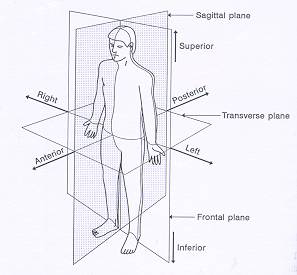When I was in the Army, I could do over 100 sit-ups in two minutes. I would almost always “max out” my score on sit-ups, and if I wanted to keep going I would usually end up around 120 or more. I was in relatively good shape, and I was young, but I wasn’t ever good enough to max out a run, or push ups. In fact, I really never liked working out, and even though I should have had “killer abs” the only semblance of a 6-pack you could see was barely visible inside my protruding rib cage, due to how skinny I was at that point. My comrade, a short and pudgy little fuck who hated me for my sit-ups, soon learned that I hated flutter kicks, and did them constantly in order to stick it to me. That shouldn’t have been a problem though since it is mainly an Ab exercises. What was the deal?
As I noted much later, it turns out the reason was I was not working my abs at all. I was working my hip flexors and lower back, complying with the “standards” of the exercise, but missing the point every time I would do sit-ups. Crunches were exactly the same, I though they were the easiest exercise in the world and I never understood why we did them. There are several different ways you can get you shoulders and head off the ground, and my bent up body was perfect for them.
it took a couple of months of Ab vacuums to develop strong enough abs to even do crunches, without letting my other muscles take over. This is called, muscle activation, when a muscle is so weak you don’t even know how to use it, and you have to practice with several low intensity exercises to get to the point that you can actually use them. I basically had to do this with my Glutes as well, and I’m becoming aware of more and more muscle groups as I use them and do more research. In reality, when I was in Buenos Aires I was trying to do frog crunches for a while, and I eventually just stopped because it didn’t feel like I was doing anything at all.
Fast forward to last week, when I was again getting into Ab exercises, after several weeks of doing planks (albeit, with bad form, but they still help), Ab vacuums, and exercise in general. I though, “hell, maybe that Vince Gironda guy knew something. I’ll give it another shot.” This time of course was much different than before. My abs were pretty sore, and I tried to use that soreness to see if I was activating them or not.
I pulled my head and shoulders forward.
Nothing.
I pulled my back of the ground.
nothing.
This isn’t right.
I remembered some Pilates stuff I had read about keeping the core tight, and tried to focus in on my abs and use only them, like the stomach vacuum, and just barely pulled myself off the ground.
Holy shit.
That was a whole different experience. For the first time in probably my whole life, I actually used my abs to do a crunch.
This just goes to show how serious, and important it is, to do both the correct exercises (sit-ups are terrible. Thanks, Army.), but also to make sure you are cognizant of which muscles you are supposed to be using, and doing everything correct to form. All those push ups and sit ups I did in high school and in the military were actually screwing me up. Along with many others whose stories I’ve come across lately, I did a bunch of bench press and curls, exercising my chest and arms while neglecting all the other muscle groups. I actively avoided back exercises, because since it was already messed up I was afraid of making it worse. Imagine my dismay 8 years later.
Learn from my example and understand what muscular imbalance is, and avoid it. Also, spend some time practicing on the muscles you need to be exercising, whether its your abs, or your Glutes, or some shoulder muscles that have been hijacked by the pectorals. It may take a lot of slow effort, but when you finally get to the point where you’re able to exercise them properly using the prescribed routines, you’ll be happy.
Alex
